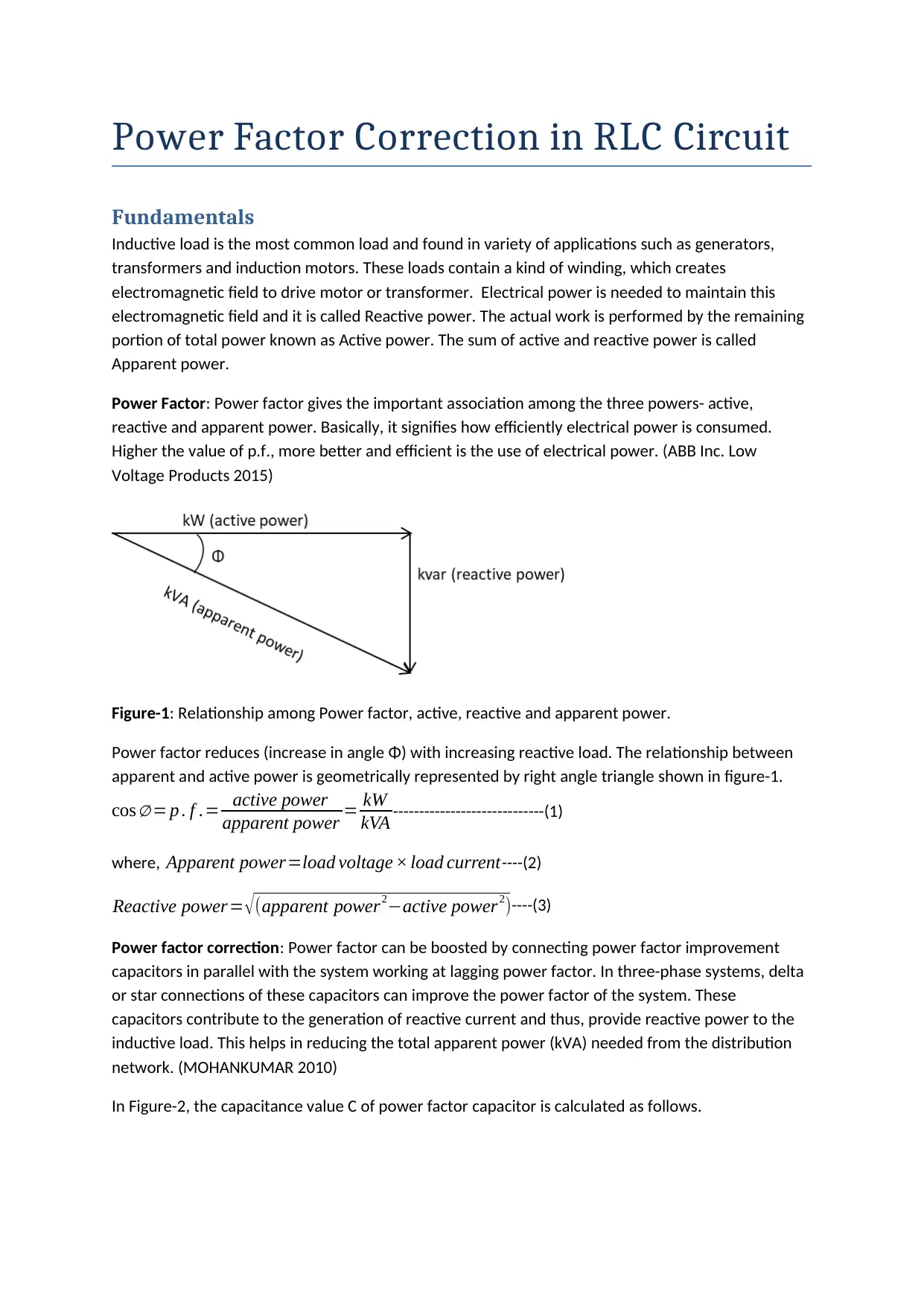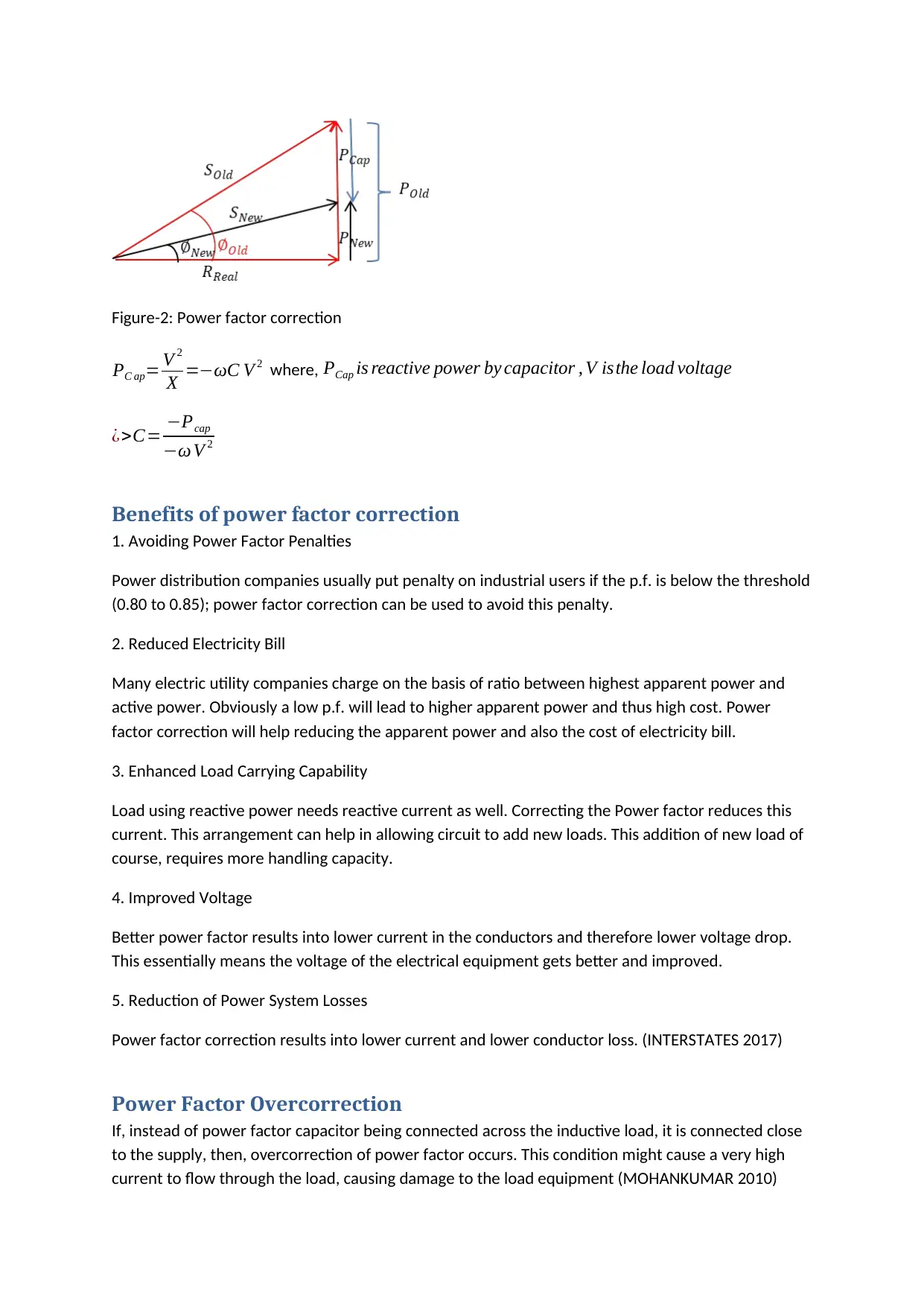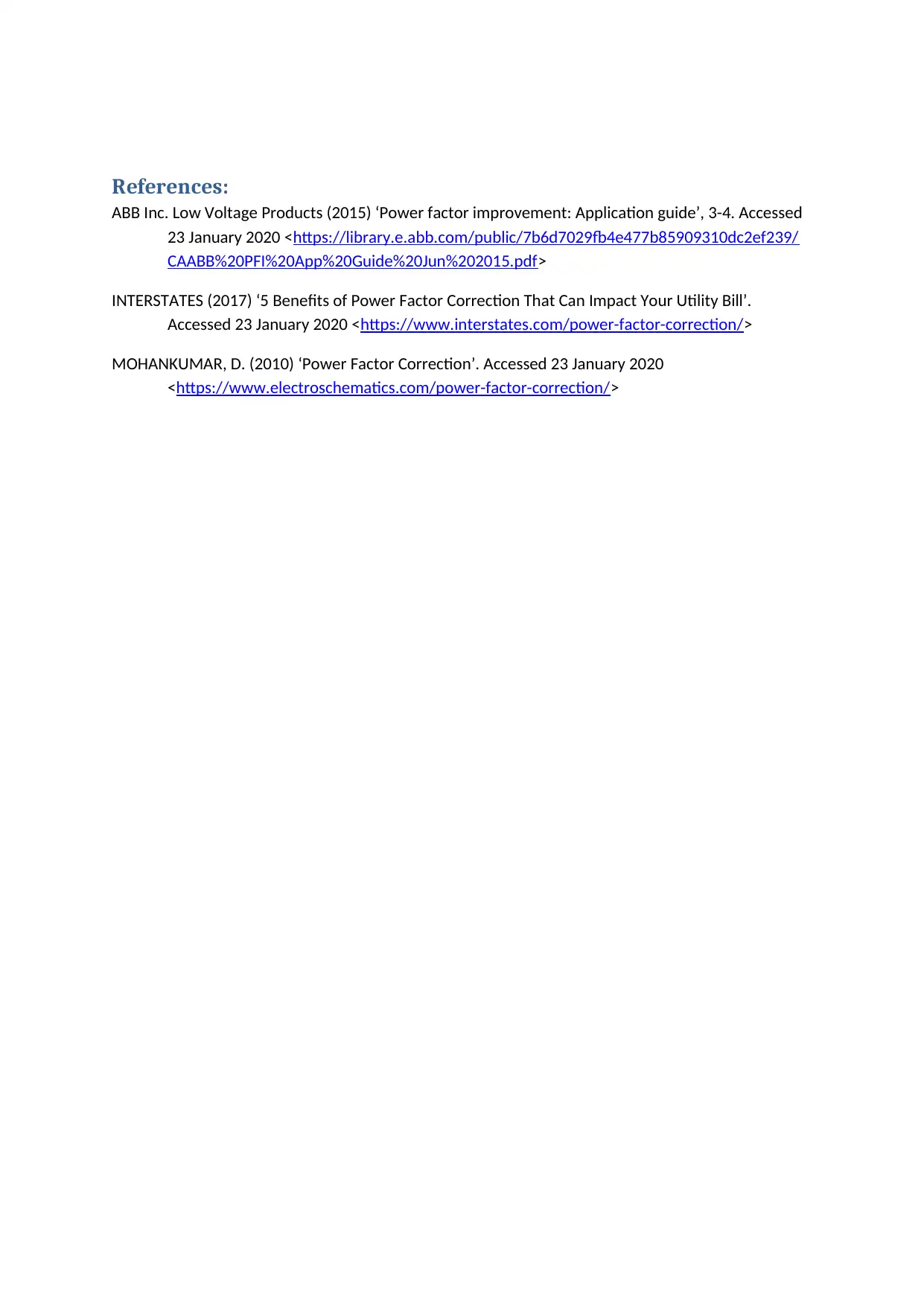Power Factor Correction in RLC Circuit Fundamentals: Detailed Report
VerifiedAdded on 2022/08/21
|3
|687
|24
Report
AI Summary
This report provides a comprehensive overview of power factor correction in RLC circuits. It begins by explaining the fundamentals of inductive loads, reactive power, and the relationship between active, reactive, and apparent power. The concept of power factor and its significance in electrical power consumption is then discussed. The report details the method of power factor correction using capacitors, including the calculation of capacitance values. Furthermore, it highlights the benefits of power factor correction, such as avoiding penalties, reducing electricity bills, enhancing load carrying capability, improving voltage, and reducing power system losses. The report also addresses the potential issue of power factor overcorrection and its consequences. The content is supported by references to relevant sources, offering a well-rounded understanding of the topic.
1 out of 3










![[object Object]](/_next/static/media/star-bottom.7253800d.svg)